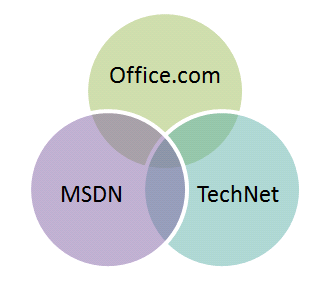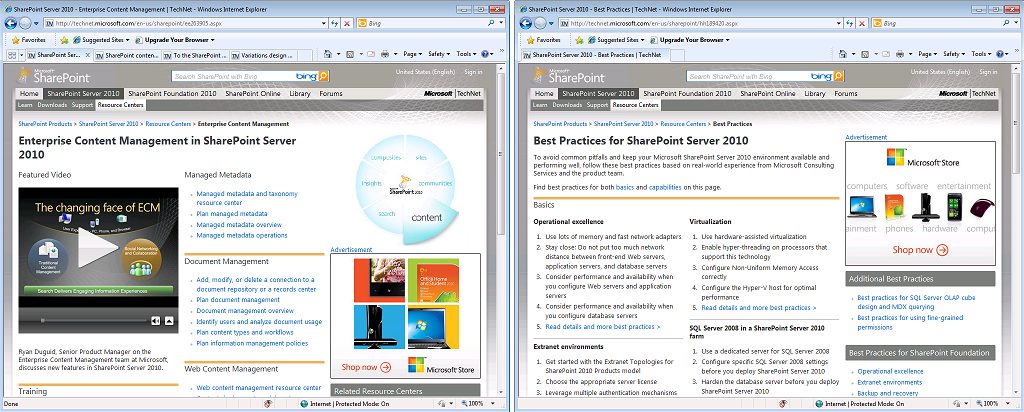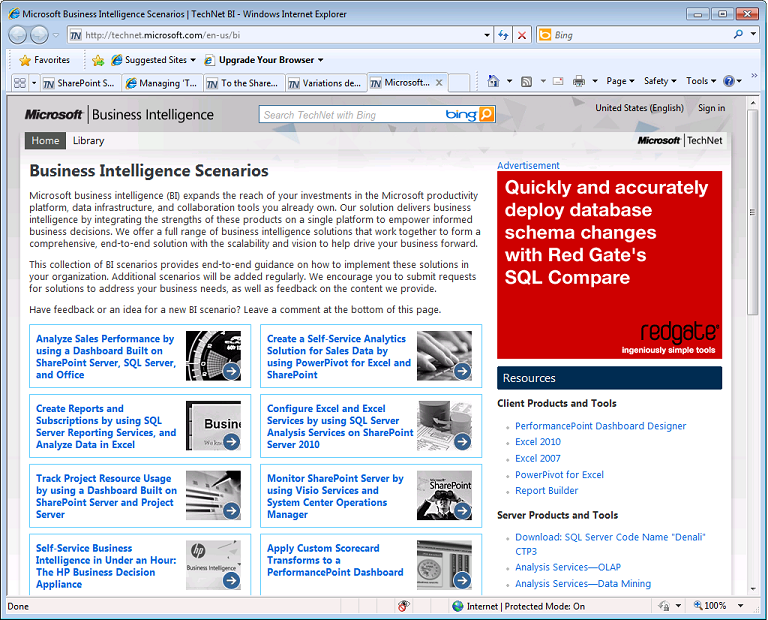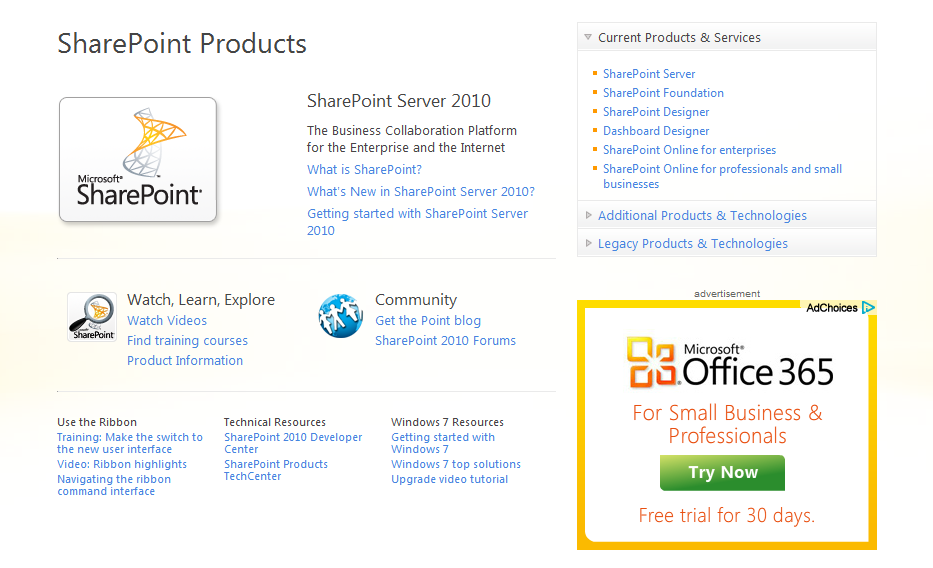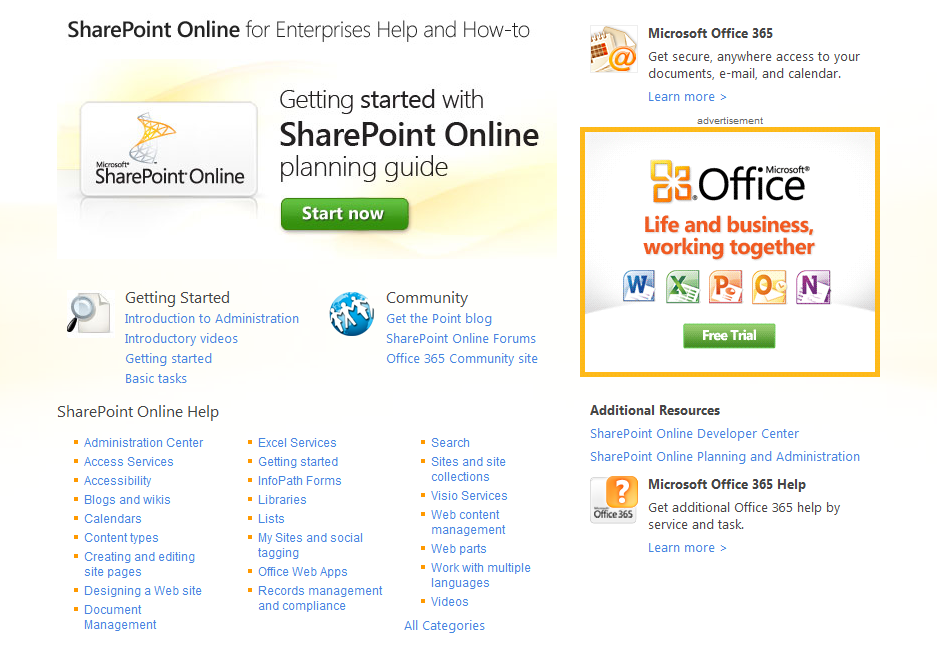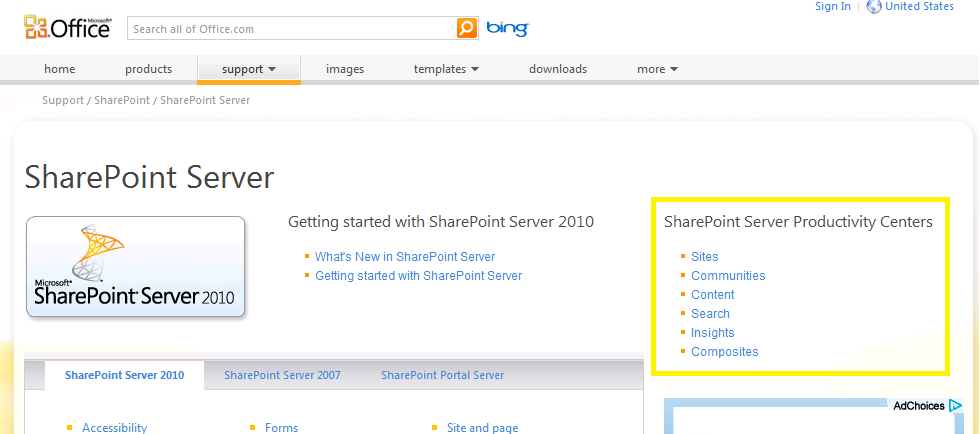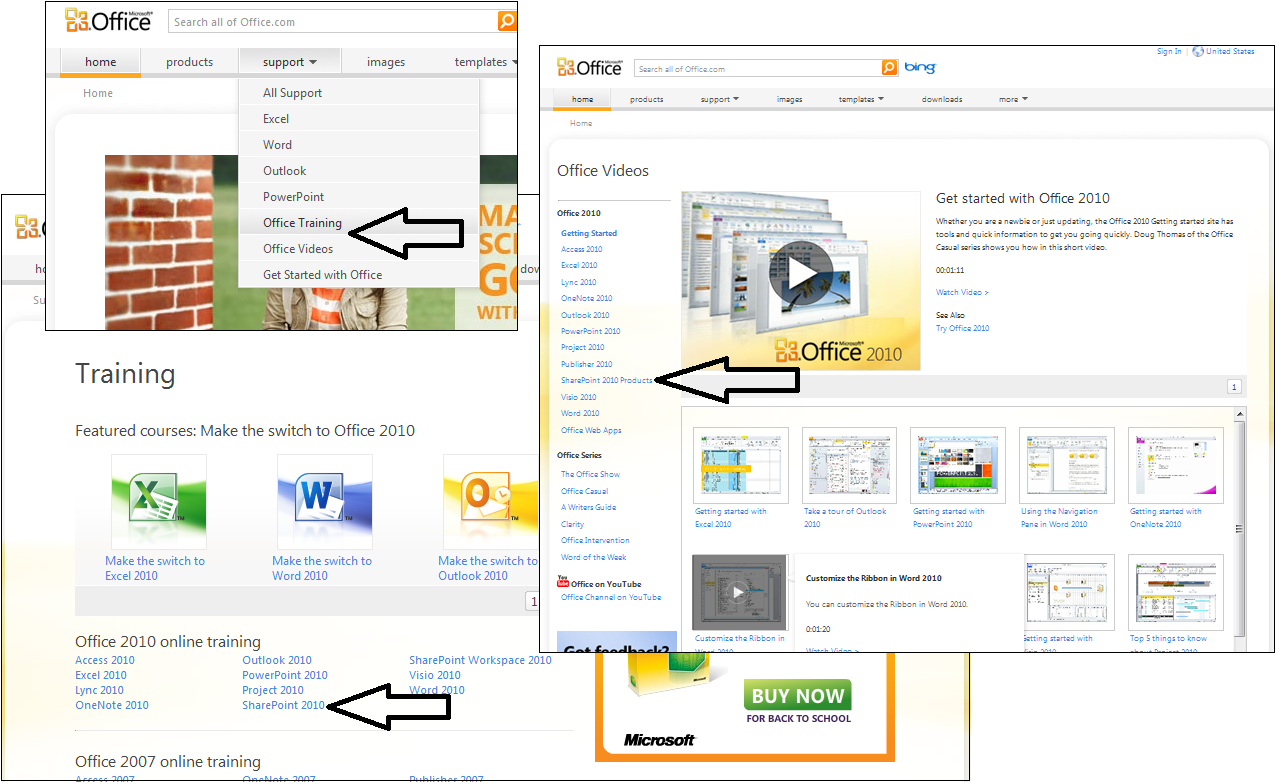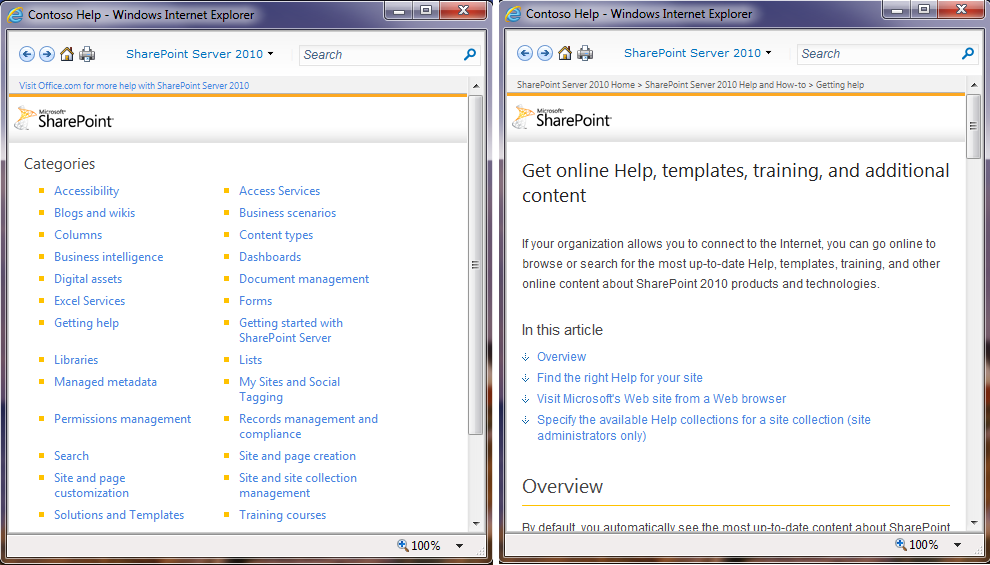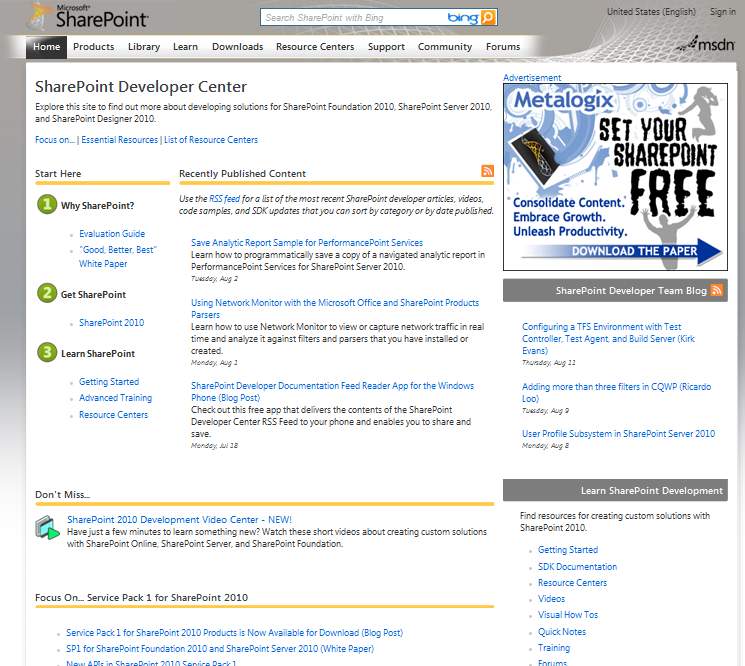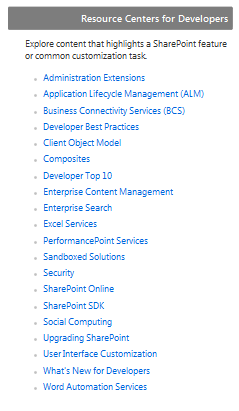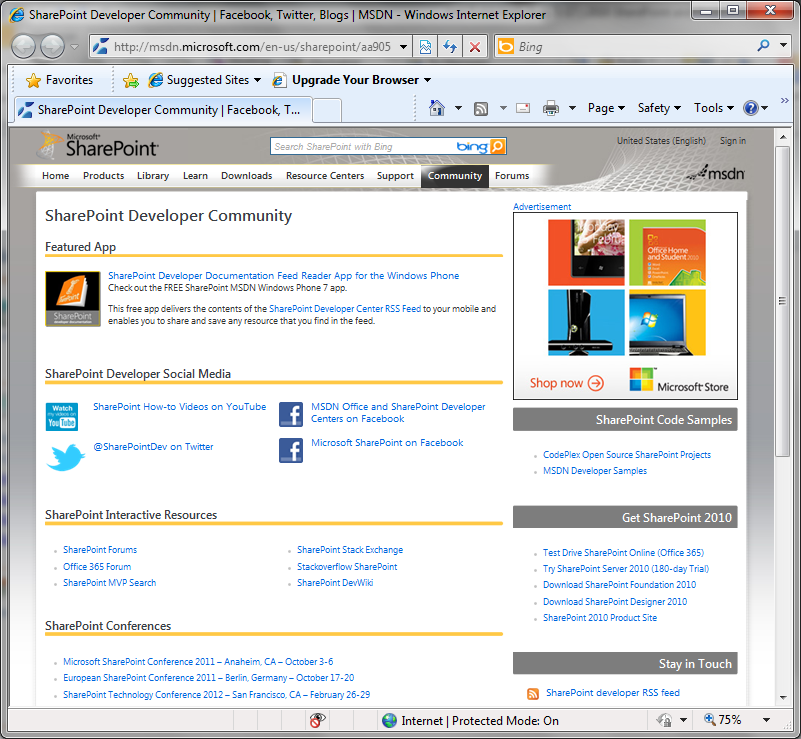SharePoint content tour: key SharePoint resources on TechNet, MSDN, and Office.com
Recently, I had the opportunity to present to the Puget Sound SharePoint Users Group about our SharePoint content. We often get questions about how to learn about the product, where to find the best information, and how to give us feedback. Not surprisingly, some of the things that we think of as obvious are not always so obvious to others, just like any field where you are close to the action. That’s why we find it so helpful to get away from our desks and talk to you directly (or read your comments on our articles and blogs).
With the SharePoint Conference coming up next week, some of us will be headed down to Anaheim to connect with all of you, gather feedback, and provide help. So this seemed like a good time to spread the word about our content, and how you can help us to improve.
We know that we (and others) have a lot of content available about SharePoint. We also know that with this breadth and depth of content comes complexity—complexity around relevance, reliability, clarity, discoverability, and more.
As an official voice for the product, we want you to find our content, use it, and give us feedback on it. I’ve designed this post to be both a cheat sheet of key links as outlined in the presentation, as well as a resource for more information about those various key links and locations.
I’ve broken this down into sections that relate to our content sites: TechNet, Microsoft Developer Network (MSDN), and Office.com. I also have information about how we use social media, and how to contact us and give us feedback.
There are lots of goodies in this post, but if you want to skip the explanation and grab just the key links, here they are:
| TechNet / IT Pros | MSDN / Developers | Office.com / End Users | |
| Overall product resources | |||
| Scenarios and tasks | SharePoint Server resource centers
|
SharePoint Server Productivity Centers
|
|
| Blogs | |||
| @MSOffice_ITPro@MSOfficeResKit | @sharepointdev@MSDN_Office | ||
| Contact us | itspdocs@microsoft.com (SharePoint IT Pro)feedork@microsoft.com (Office client IT Pro) |
TechNet
TechNet is the site where we publish content for IT Professionals who are evaluating, planning, deploying, configuring, and troubleshooting the SharePoint platforms and solutions.
TechCenters
At the top level, we have TechCenters that align to various products and specific versions of products:
https://technet.microsoft.com/sharepoint
https://technet.microsoft.com/office
https://technet.microsoft.com/lync
https://technet.microsoft.com/exchange
https://technet.microsoft.com/projectserver
https://technet.microsoft.com/sqlserver
Use the top level navigation to easily access the version-specific TechCenters, or to go directly to the SharePoint content in the TechNet library or SharePoint forums:
Some of the version-specific TechCenters contain second-level navigation to help you locate information such as training or support for the product.
Resource Centers
TechCenters contain resource centers, which are more targeted to features and functionality or logical groups of content for the product. The list of resource centers is available from:
- The second-level navigation of the SharePoint Server 2010 and SharePoint Foundation 2010 TechCenters.
- The Resource Centers tab on the SharePoint Server 2010 and SharePoint Foundation 2010 TechCenter pages.
- Directly from links: SharePoint Server 2010 resource centers and SharePoint Foundation 2010 resource centers.
For example, the Enterprise Content Management resource center pulls together information about managing enterprise content such as documents and records, metadata, and media. The Best Practices resource center pulls together a logical grouping of content that provides best practices for deploying and managing SharePoint.
Solution Centers
Solution Centers are a newer type of resource that we’re experimenting with. Solution Centers are a place to gather tasks that span audiences and content across our sites to accomplish a solution from end-to-end.
Right now, we have one solution center available called Published Intranets in SharePoint Server 2010. It contains a task map that identifies the roles responsible for tasks across the lifecycle of the solution project. You can zoom in to the areas on the task map from your browser or download a copy in several different formats. The page also lists out the tasks by lifecycle phase (evaluate, plan, develop, deploy, and operate) so that you can learn more about each task and find related content.
Scenario Content Hubs
Scenario content hubs are larger in scope than TechCenters and resource centers. Even though we are organized in the company around our product division, you know that we have a lot of integration points with other products. While we don’t write content for those products, like SQL Server or Windows, we do rely on those content teams to have documentation that helps us tell the bigger picture.
Business intelligence (BI) is a perfect example of an area where a scenario content hub can help you understand the integration points and benefits of an integrated approach.
Some of the scenario content hubs include:
- https://technet.microsoft.com/bi
- https://technet.microsoft.com/cloud
- https://technet.microsoft.com/virtualization
Library table of contents (TOC)
One of the lesser-known facts is that our content is arranged in the table of contents (TOC) according to the IT service lifecycle and specifically the Microsoft Operations Framework (MOF). The top-level groups in our content aren’t called the exact same thing, but they do align to this framework.
This is true for our current SharePoint 2010 release. It’s a content model used by many content teams across Microsoft server products, though you’ll probably notice that some follow it more closely than others or that one team interprets the groups differently than another team. And with each new release a team adjusts the TOC based on feedback and need. In other words, don’t get too comfortable.
Though we get a lot of feedback that everyone is using search now, we still put effort into the TOC because the content needs to be organized somehow in the library. We use the TechCenters, Resource Centers, and so on to give alternate views into the content, but the library TOC is still what you’ll end up seeing when you click links to a topic. You may as well be taken somewhere that makes some sense.
The problem is that TOC organization is more difficult than it looks. Throughout my time at Microsoft, I’ve seen the TOCs go from very feature-oriented to lifecycle-oriented to more scenario-oriented. Inevitably, each time we get feedback from someone (or many someones) that we got it wrong. Turns out that you can’t please everyone, but rest assured that we do try. In fact, we’re already talking about what to do with the TOC for our next release—let us know what you think so we can include your feedback in our discussions.
Key Library Pages
There are a few pages in the library that I highly recommend checking often:
- Newly Published Content: This page is a goldmine. Every time we publish new or significantly updated content, we keep track of it on this page. You’ll see history for several months in the past as well as the most current update. We provide the topic title, link, and a summary of the reason it’s being published. This page contains an RSS feed so you can subscribe to changes when it is updated.
- SharePoint Content Roadmap: If you’re an IT Pro and forget where something is, this page is useful and visible right near the top of the TOC.
- Downloadable Content: This page points you to the wealth of resources available for download, including our technical diagrams, books, white papers, and even our content set in a compiled Help file (CHM).
- Video Demos and Training: This page contains sections that outline the various demos and training videos to help you learn about SharePoint.
Office.com
Office.com is the site where we publish content for end users who are using the SharePoint platform and solutions. These are the users who are creating sites and using them to solve business problems, such as reporting, managing documents, collaborating with others on their team or in their organization, and so on.
SharePoint Products pages
The SharePoint Products pages on Office.com are similar to the TechCenters on TechNet. They are hubs for the various products including SharePoint Server, SharePoint Foundation, SharePoint Designer, Dashboard Designer, and SharePoint Online offerings.
Use the links under Current Products & Services to easily delve into product-specific pages that group content by version and area into a table of contents (TOC) and other related resources.
SharePoint Server Productivity Centers
The SharePoint Server product has productivity centers that help you locate information that is specific to related tasks and features in SharePoint. These productivity centers are Sites, Communities, Content, Search, Insights, and Composites. Productivity Centers on Office.com are similar to Resource Centers on TechNet.
You can access them from SharePoint Server page on Office.com, and from each of the individual productivity center pages.
Videos and Training
Office.com provides links to many videos and training resources. You can access these pages from the support on the Office.com menu and clicking Office Training and Office Videos. These pages provide a different type of content than traditional articles.
In-Product Help
SharePoint products contain in-product Help. You can access this Help by pressing the Help icon ( ). When you click the Help button on a SharePoint 2010 site, you are looking at the latest Help from Office.com, unless the server administrator has turned off the Help from Microsoft or customized Help in some way. This same Help is also published directly to Office.com.
). When you click the Help button on a SharePoint 2010 site, you are looking at the latest Help from Office.com, unless the server administrator has turned off the Help from Microsoft or customized Help in some way. This same Help is also published directly to Office.com.
MSDN
MSDN is the site where we publish content for developers who are extending and customizing for the SharePoint platforms and solutions.
Developer Centers
Developer Centers are analogous to the TechNet TechCenters and Office.com product pages. They contain resource centers for the developer audience along with content to help you get started with development for SharePoint. Like TechNet and Office.com, adding “/sharepoint” to the main URL gets you to the SharePoint Developer Center page:
Resource Centers
Like TechNet resource centers and Office.com Productivity Centers, MSDN has resource centers that contain resources specific to various capabilities and functionality in SharePoint.
You can access the resource centers on MSDN by:
- Clicking the List of Resource Centers link at the top of the SharePoint Developer Center page.
- Clicking Resource Centers in the top navigation bar.
- Directly from links on the Resource Centers page.
SharePoint Developer Community
MSDN also has a SharePoint Developer Community page that combines useful information about social media, conferences, code samples, and other resources.
Social media
In addition to all of the resources above, we have blogs and Twitter accounts set up to help you keep informed about our content and the product.
Blogs
IT Pro: To the SharePoint
End users: Get the Point
Developer: SharePoint Developer Team Blog
@MSOfficeResKit – Office Resource Kit for IT Pros
@MSOffice_ITPro – Office & SharePoint IT Pro
@MSDN_Office – Office & SharePoint Developer
@sharepointdev – SharePoint Developer Content
In addition to these pages, you’ll find that a lot of our team tweets individually as well. You can find us by checking out the @MSOffice_ITPro page and viewing the list of co-tweet members, such as me (@arkaytee) and our trusted Technical Audiences Community Contact for Content Publishing, Nina Ruchirat (@msninar).
Getting involved
We can’t tell you enough how much we appreciate it when you give us feedback on our content. We really do pay attention to your ratings and comments.
Here are some tips that can help us get the most from your feedback:
- Be specific. Ratings are great, but specific verbal feedback is a bonus that tells us why you were or were not satisfied with the topic.
- Think about what you’re rating. Ratings and comments are specific to the article that you’re on and they are tied to the content, not the library experience or product issues.
- Give us feedback. If you found an article that really helped you or if you found an issue in a topic, let us know. Both kinds of feedback help us to prioritize when planning other content.

Additionally, we love it when you want to work with us on content. Think you know of a gap that you’d like to fill or have some great content that you’d like to share? Drop us a line with feedback or ideas. We love to hear from you.
Here’s how you can contact us:
- SharePoint products IT Pro: itspdocs@microsoft.com
- Office client IT Pro: feedork@microsoft.com
- Office and SharePoint Developer page on Facebook
- Lync and Exchange Server content teams: lyncdoc@microsoft.com and edafdbk@microsoft.com
Happy reading, and we hope to see you at the SharePoint Conference next week!
